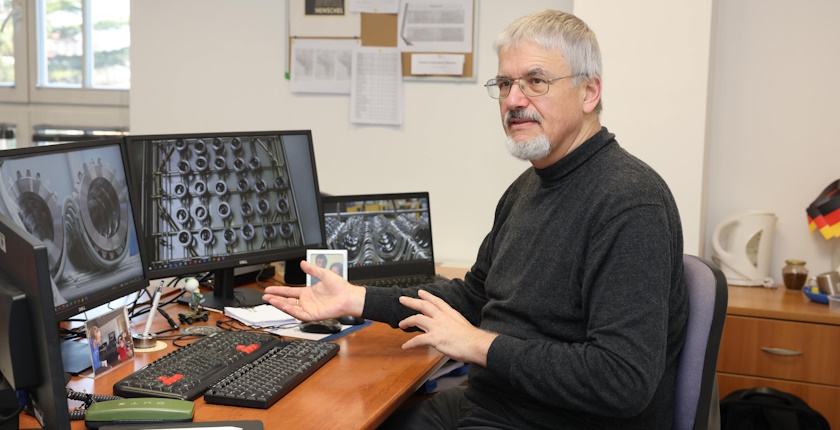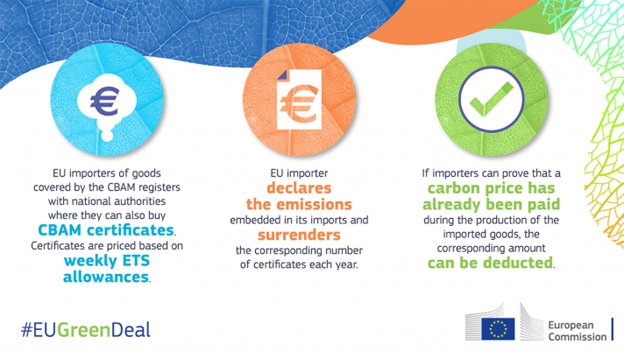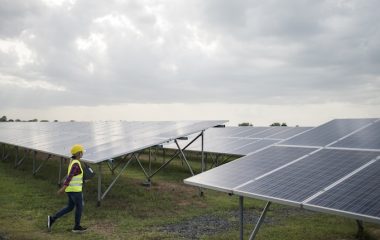
Photo: Johannes Heidecker
The author is Johannes Heidecker, Advisor to the Prime Minister of North Macedonia
That’s it, finally: the CBAM – Carbon Border Adjustment Mechanism of the EU is established. The goal: not to import CO2 “for free” when emissions cost money to the EU. How easy it would be to cope with high energy + CO2 prices in the EU, just relocating the production outside, from Tunisia to the US, thus importing without hassle!
As of October 1st, CO2 emissions have to be reported quarterly to the EU for imports of iron and steel, cement, fertilizer, aluminum, electricity and hydrogen. Starting in 2026, an import carbon tax will be applied, similar to the then-valid CO2 pricing for EU polluters.
How does this concern the economies of the Western Balkans? The EU accounts for 67% of CEFTA’s exports, EUR 36.9 billion in 2022. About half of which might fall under the regulations for “iron and steel”, the most complex category.
No simplification with CBAM
Measuring the data from a factory to calculate the energy input for cement or fertilizer is rather easy. But what about a FIAT Panda car from Serbia? How many different parts contain iron? Estimations range from 30,000 to a hundred times as much including the pre-products, and collecting the data is a tremendous challenge.
The recent past let us witness the difficulties in declaring goods to UK after Brexit: this complexity led many, especially smaller, suppliers to stop trading cross-border while other producers moved out of UK, despite the lack of customs duties, just to avoid bureaucracy.
Some producers moved out of the United Kingdom to avoid customs bureaucracy
The carbon border regulations could also result in an EU producer moving his production outside the EU to, let us say, supply the US just to reduce cross-border reporting requirements.
Similar problems have been solved for customs. To get the benefit of free trade agreements, EU border customs declarations come with a declaration of origin.
When is the above-mentioned FIAT Panda from Serbia a Serbian product, even if it contains seats made in Tunisia and tires from China? Fortunately, there is a simplification rule: if over 50 % of its value is from Serbia, then it is a Serbian vehicle. If 30 % of the value are Serbian labor + 15 % for Serbian assets and the engine comes from EU, then the 50 % proof is done in a minute. But CBAM does not have such simplification rules.

Smaller entities suffer greater administrative burden than larger ones
The issue has a lesser impact on large industrial groups. Most of them already measure their CO2 emissions. Some even have green energy purchasing rules and already buy the necessary renewable energy or at least certificates even though it is not mandatory outside the EU.
Small companies that would like to access EU for their growth are more affected. And the current rules might only be the beginning as new goods categories could be added later, or services like transport.
Like in many other areas, from reporting to quality requirements, administrative burdens are heavier on smaller than on larger entities. Installing a blockchain-based CO2 tracking tool is easier for a multinational than for a 100-employee company.
Carbon pricing proceeds can be used against energy poverty
The Western Balkans are already dealing with their local companies lacking integration in international value chains and foreign investors or EU importers buying little from small Balkan companies. The Carbon Border becomes an additional administrative barrier and politics should be concerned with its consequences.
There are some solution scenarios. The simplest is to hope that the requirement will fade away and that a political opportunity will bring the EU to extend the exemptions for some time or forever. But it is hard to imagine economic growth under such a scenario as investors may doubt the perennity of such exemptions.
Investors would doubt the perennity of exemptions from CBAM
Another scheme is implementing a synchronized CO2 pricing scheme or at least a CO2 emissions monitoring scheme which would reduce the administrative burden. Both would require active and detailed negotiations with the EU.
CO2 pricing would imply that the Western Balkans countries be inside the CBAM area themselves. Increasing the CO2 price for companies would generate a revenue that could be used to fight energy poverty while being an incentive for the local economy to invest in renewable energy sources.
Emission reductions are more realistic than big players’ carbon neutrality ambitions
Increased fuel prices could be compensated by a “cash-for-clunker” program to allow access to more fuel-efficient private and commercial vehicles. A used Euro-5 vehicle emits much less CO2 than a Euro-1 car.
Reducing the amount of emissions should win over implementing zero emission requirements that are applicable to a selected few. The geographic situation in the South of Europe favors solar energy production and the wind capacity is also not fully harvested. A higher production could benefit the green hydrogen production that could be exported to the EU while an ample green energy supply could make the region more attractive to produce fertilizers or steel close to the EU.
CO2 community modeled after European Coal and Steel Community
Quantitative emission reductions in return for relief from administrative burdens would serve the purpose of CBAM while allowing the economy to grow subsequently. Such programs could be part of the New Growth Plan to be agreed upon with the EU. Proof of quantitative emission reductions – but same export administration conditions from Montenegro to Finland as from Portugal to Spain.
The economic community is the one that has to raise the CBAM issue
The European Union did not start as such. At the beginning, long ago, was the European Coal and Steel Community. The Western Balkans could remember and seek to have a similar approach: being part of a “CO2 community” which would prompt growth and be the base for further integration in other areas.
How to get there? By raising awareness, through more exchange and less propaganda in round tables and bilateral meetings, with a stronger integration of the business community in the political processes. It is the economic community that has to raise the issue, not hope that others will do it for them and then complain about the failures. Meet your deputy, talk to your chamber, invite your minister today if you want to do good business tomorrow!


















Be the first one to comment on this article.